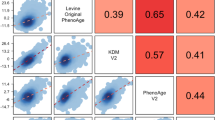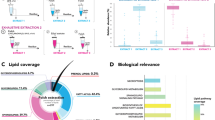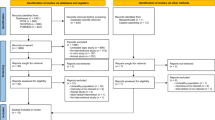Abstract
Although 8-hydroxy-2-deoxyguanosine (8-OHdG) is a widely used promising biomarker of DNA damage, there are concerns about which tissues or body fluids should be sampled. The objective of this study is to evaluate the correlation of DNA oxidative damage biomarkers, 8-OHdG, between blood and urine and risk factors associated with 8OHdG. The study population was recruited from a baseline survey of a worksite lifestyle study including 92 office workers aged 23 to 60 years. A self-administered questionnaire was used to collect information on personal characteristics. The plasma and urinary 8-OHdG was measured by liquid chromatography tandem mass spectrometry (LC-MS/MS). In linear regression, a positive relation was found (p < 0.01) between the log-transformed plasma and urinary 8-OHdG levels adjusted for gender, age, BMI, and smoking status. Our findings showed that age, gender and smoking were significantly associated with plasma 8-OHdG, but not with urinary 8-OHdG. Our results suggest that there is a positive relation between the biomarkers of plasma (steady state DNA damage) and urinary 8-OHdG (total DNA damage). However, the plasma 8-OHdG is more sensitive than urinary 8-OHdG to detect increased oxidative damages induced by risk factors.

Similar content being viewed by others
References
Alper G, Irer S, Duman E, Caglayan O, Yilmaz C (2005) Effect of I-deprenyl and gliclazide on oxidant stress/antioxidant status and DNA damage in a diabetic rat model. Endocr Res 31(3):199–212
Besaratinia A, Van Schooten FJ, Schilderman PA, De Kok TM, Haenen GR, Van Herwijnen MH (2001) A multi-biomarker approach to study the effects of smoking on oxidative DNA damage and repair and antioxidative defense mechanisms. Carcinogenesis 22(3):395–401
Black CN, Bot M, Scheffer PG, Penninx BW (2016) Sociodemographic and lifestyle determinants of plasma oxidative stress markers 8-OHdG and F2-isoprostanes and associations with metabolic syndrome. Oxid Med Cell Longev 2016:7530820. doi:10.1155/2016/7530820, Epub 2016 Feb 23
Chen HI, Liou SH, Ho SF, Wu KY, Sun CW, Chen MF et al (2007) Oxidative DNA damage estimated by plasma 8-hydroxydeoxy-guanosine (8-OHdG): influence of 4, 4′-methylenebis (2-chloroaniline) exposure and smoking. J Occup Health 49(5):389–398
Chuang CY, Lee CC, Chang YK, Sung FC (2003) Oxidative DNA damage estimated by urinary 8-hydroxydeoxyguanosine: influence of taxi driving, smoking and areca chewing. Chemosphere 52(7):1163–1171
Evans MD, Dizdaroglu M, Cooke MS (2004) Oxidative DNA damage and disease: induction, repair and significance. Mutat Res 567(1):1–61
Fan R, Wang D, Mao C, Ou S, Lian Z, Huang S et al (2012) Preliminary study of children’s exposure to PAHs and its association with 8-hydroxy-2′-deoxyguanosine in Guangzhou, China. Environ Int 42:53–58
Federico A, Morgillo F, Tuccillo C, Ciardiello F, Loguercio C (2007) Chronic inflammation and oxidative stress in human carcinogenesis. Int J Cancer 121(11):2381–2386
Halliwell B (2000) Why and how should we measure oxidative DNA damage in nutritional studies? How far have we come? Am J Clin Nutr 72(5):1082–1087
Hakim IA, Harris RB, Brown S, Chow HH, Wiseman S, Agarwal S et al (2003) Effect of increased tea consumption on oxidative DNA damage among smokers: a randomized controlled study. J Nutr 133(10):3303S–3309S
Hori A, Kasai H, Kawai K, Nanri A, Sato M, Ohta M et al (2014) Coffee intake is associated with lower levels of oxidative DNA damage and decreasing body iron storage in healthy women. Nutr Cancer 66(6):964–969
Hu CW, Wu MT, Chao MR, Pan CH, Wang CJ, Swenberg JA et al (2004) Comparison of analyses of urinary 8-hydroxy-2′-deoxyguanosine by isotope-dilution liquid chromatography with electrospray tandem mass spectrometry and by enzyme-linked immunosorbent assay. Rapid Commun Mass Spectrom 18(4):505–510
Karihtala P, Soini Y (2007) Reactive oxygen species and antioxidant mechanisms in human tissues and their relation to malignancies. APMIS 115(2):81–103
Kasai H, Iwamoto-Tanaka N, Miyamoto T, Kawanami K, Kawanami S, Kido R et al (2001) Life style and urinary 8-hydroxydeoxyguanosine, a marker of oxidative DNA damage: effects of exercise, working conditions, meat intake, body mass index, and smoking. Jpn J Cancer Res 92(1):9–15
Kawanishi S, Hiraku Y (2006a) Oxidative and nitrative DNA damage as biomarker for carcinogenesis with special reference to inflammation. Antioxid Redox Signal 8(5-6):1047–1058
Kawanishi S, Hiraku Y, Pinlaor S, Ma N (2006b) Oxidative and nitrative DNA damage in animals and patients with inflammatory diseases in relation to inflammation-related carcinogenesis. Biol Chem 387(4):365–372
Kimura S, Yamauchi H, Hibino Y, Iwamoto M, Sera K, Ogino K (2006) Evaluation of urinary 8-hydroxydeoxyguanine in healthy Japanese people. Basic Clin Pharmacol Toxicol 98(5):496–502
Klaunig JE, Xu Y, Isengerg JS, Bachowski S, Kolaja KL, Jiang J (1998) The role of oxidative stress in chemical carcinogenesis. Environ Health Perspect 106(suppl1):289–295
Kristenson M, Kucinskiene Z, Schafer-Elinder L, Leanderson P, Tagesson C (2003) Lower serum levels of beta-carotene in Lithuanian men are accompanied by higher urinary excretion of the oxidative DNA adduct, 8-hydroxydeoxyguanosine. The LiVicordia study. Nutrition 19(1):11–15
Kuo HW, Chang SF, Wu KY, Wu FY (2003) Chromium (VI) induced oxidative damage to DNA: increase of urinary 8-hydroxydeoxyguanosine concentrations (8-OHdG) among electroplating workers. Occup Environ Med 60(8):590–594
Lai CH, Liou SH, Lin HC, Shih TS, Tsai PJ, Chen JS (2005) Exposure to traffic exhausts and oxidative DNA damage. Occup Environ Med 62(4):216–222
Li J, Fan R, Lu S, Zhang D, Zhou Y, Lv Y (2015a) Exposure to polycyclic aromatic hydrocarbons could cause their oxidative DNA damage: a case study for college students in Guangzhou, China. Environ Sci Pollut Res Int 22(3):1770–1777
Li J, Lu S, Liu G, Zhou Y, Lv Y, She J et al (2015b) Co-exposure to polycyclic aromatic hydrocarbons, benzene and toluene and their dose-effects on oxidative stress damage in kindergarten-aged children in Guangzhou, China. Sci Total Environ 15(524-525):74–80
Liu H, Uno M, Kitazato KT, Suzue A, Manabe S, Yamasaki H et al (2004) Peripheral oxidative biomarkers constitute a valuable indicator of the severity of oxidative brain damage in acute cerebral infarction. Brain Res 1025(1-2):43–50
Loft S, Vistisen K, Ewertz M, Tjonneland A, Overvad K, Poulsen HE (1992) Oxidative DNA damage estimated by 8-hydroxydeoxyguanosine excretion in humans: influence of smoking, gender and body mass index. Carcinogenesis 13(12):2241–2247
Pilger A, Germadnik D, Riedel K, Meger-Kossien I, Scherer G, Rudiger HW (2001) Longitudinal study of urinary 8-hydroxy-2′-deoxyguanosine excretion in healthy adults. Free Radic Res 35(3):273–280
Pilger A, Rudiger HW (2006) 8-hydroxydeoxyguanosineas a marker of oxidative damage related to occupational and environmental exposure. Int Arch Occup Environ Health 8(1):1–15
Prieme H, Loft S, Klarlund M, Gronbaek K, Tonnesen P, Poulsen HE (1998) Effect of smoking cessation on oxidative DNA modification estimated by 8-oxo-7,8-dihydro2′-deoxyguanosine excretion. Carcinogenesis 19(2):347–351
Proteggente AR, England TG, Rehman A, Rice-Evans CA, Halliwell B (2002) Gender differences in steady-state levels of oxidative damage to DNA in healthy individuals. Free Radic Res 36(2):157–162
Schleicher E, Friess U (2007) Oxidative stress, age, and atherosclerosis. Kidney Int Suppl(106):S17–S26
Suzuki K, Ito Y, Ochiai J, Aoki K, Wakai K, Tamakoshi A et al (2003) The relationship between smoking habits and serum levels of 8-OHdG, oxidized LDL antibodies, Mn-SOD and carotenoids in rural Japanese residents. J Epidemiol 13(1):29–37
van Zeeland AA, de Groot AJ, Hall J, Donato F (1999) 8-Hydroxydeoxyguanosine in DNA from leukocytes of healthy adults: relationship with cigarette smoking, environmental tobacco smoke, alcohol and coffee consumption. Mutat Res 439(2):249–257
Wang CJ, Yang NH, Chang CC, Liou SH, Lee HL (2011a) Rapid and simple one-step membrane extraction for the determination of 8-hydroxy-2′-deoxyguanosine in human plasma by a combination of on-line solid phase extraction and LC-MS/MS. J Chromatogr B Analyt Technol Biomed Life Sci 879(30):3538–3543
Wang Q, Wang L, Chen X, Rao KM, Lu SY, Ma ST et al (2011b) Increased urinary 8-hydroxy-2′-deoxyguanosine levels in workers exposed to di-(2-ethylhexyl) phthalate in a waste plastic recycling site in China. Environ Sci Pollut Res Int 18(6):987–996
Wieland P, Lauterburg BH (1995) Oxidation of mitochondrial proteins and DNA following administration of ethanol. Biochem Biophys Res Commun 213(3):815–819
Zhang T, Xue J, Gao CZ, Qiu RL, Li YX, Li X et al (2016) Urinary Concentrations of bisphenols and their association with biomarkers of oxidative stress in people living near e-waste recycling facilities in china. Environ Sci Technol 50(7):4045–4053
Acknowledgment
This study was partly supported by the research grant from Da Chien General Hospital, Miaoli, Taiwan, and partly supported by National Health Research Institutes, Miaoli, Taiwan, R.O.C.
Author information
Authors and Affiliations
Corresponding author
Additional information
Responsible editor: Philippe Garrigues
Rights and permissions
About this article
Cite this article
Wang, CC., Chen, WL., Lin, CM. et al. The relationship between plasma and urinary 8-hydroxy-2-deoxyguanosine biomarkers measured by liquid chromatography tandem mass spectrometry. Environ Sci Pollut Res 23, 17496–17502 (2016). https://doi.org/10.1007/s11356-016-6898-4
Received:
Accepted:
Published:
Issue Date:
DOI: https://doi.org/10.1007/s11356-016-6898-4




